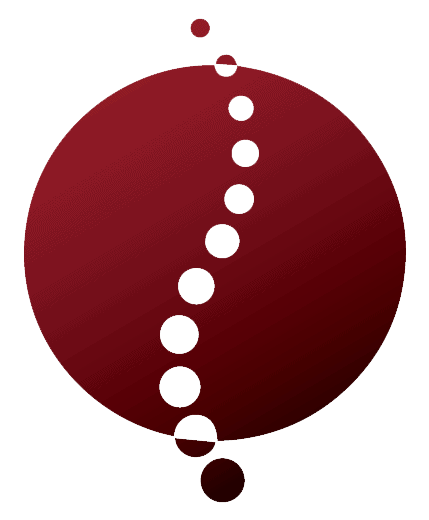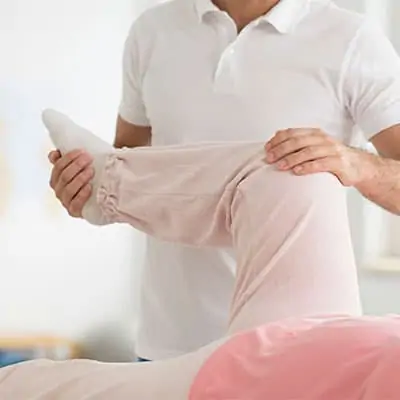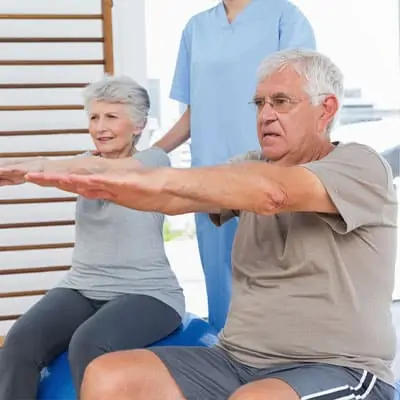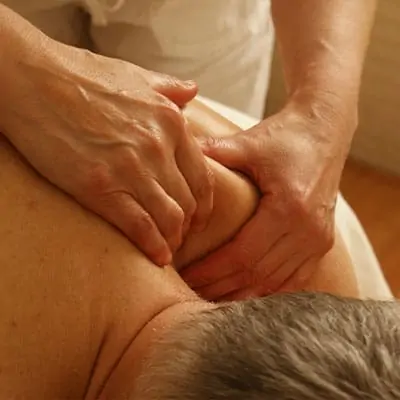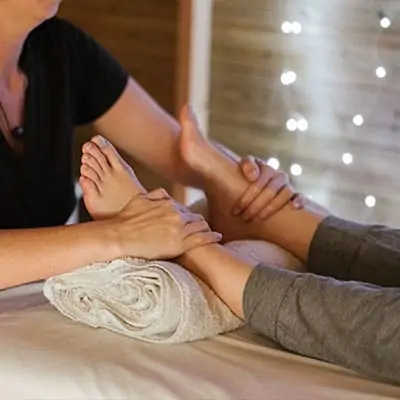Understanding Scoliosis Pain
Understanding scoliosis pain is essential for managing the condition effectively. In this section, you’ll learn what scoliosis is and the different types of pain associated with it.
What is Scoliosis?
Scoliosis is a medical condition characterized by an abnormal lateral curvature of the spine. This condition can affect people of all ages, but it is most commonly diagnosed during adolescence. The spine of a person with scoliosis may look like an “S” or a “C” shape, rather than a straight line.
Scoliosis can be classified into various types, including idiopathic, congenital, and neuromuscular scoliosis. Idiopathic scoliosis, the most common type, has no known cause. Congenital scoliosis is present at birth due to malformations in the spine. Neuromuscular scoliosis results from neurological or muscular conditions.
For detailed information on the different types of scoliosis, visit our article on scoliosis types.
Types of Scoliosis Pain
Scoliosis pain can manifest in various forms, affecting different parts of your body. Understanding these pain types can help you better manage and treat your condition.
Muscular Pain
Muscular pain is a common symptom of scoliosis. As your spine curves, it places uneven stress on your back muscles, causing them to become overworked and fatigued. This can lead to muscle spasms, tightness, and soreness.
Nerve Pain
Nerve pain occurs when the curvature of your spine compresses the nerves in your back. This can lead to radiating pain, numbness, or tingling sensations in your legs and arms. Nerve pain can be particularly debilitating and may require targeted treatment strategies.
Joint Pain
Joint pain in scoliosis is often due to the abnormal wear and tear on your spinal joints. The uneven pressure can cause inflammation and discomfort in the joints, leading to stiffness and reduced mobility.
Pain from Bracing
If you’re using a scoliosis brace as part of your treatment, you may experience pain or discomfort from wearing it. This pain is usually temporary and can be managed with proper fitting and adjustments.
| Type of Pain | Description | Common Areas Affected |
|---|---|---|
| Muscular Pain | Overworked and fatigued muscles | Back, shoulders |
| Nerve Pain | Compressed nerves causing radiating pain | Legs, arms |
| Joint Pain | Inflammation and discomfort in joints | Spine, hips |
| Pain from Bracing | Discomfort from wearing a brace | Torso, back |
Understanding the different types of scoliosis pain can help you and your healthcare provider develop a comprehensive pain management plan. For more information on managing scoliosis pain, visit our article on scoliosis management.
Coping Strategies for Scoliosis Pain
Finding effective ways to manage scoliosis pain is crucial for maintaining your quality of life. This section covers several strategies that can help you cope with the discomfort associated with this condition.
Physical Therapy and Exercise
Physical therapy can be highly beneficial for individuals with scoliosis. A trained physical therapist can develop a personalized exercise regimen tailored to your specific needs. Exercises that focus on strengthening and stretching can help improve your posture and reduce pain.
Key exercises for scoliosis include:
- Stretching: Enhances flexibility and relieves tension in the muscles around the spine.
- Strengthening: Builds core and back muscles to support the spine.
- Balance exercises: Improves overall body mechanics and stability.
For a list of specific exercises, check out our article on scoliosis exercises.
| Exercise Type | Benefits |
|---|---|
| Stretching | Improves flexibility, reduces muscle tension |
| Strengthening | Enhances muscle support, alleviates pain |
| Balance | Boosts stability, corrects posture |
Pain Management Techniques
Managing scoliosis pain often involves a combination of approaches. Over-the-counter pain relievers, prescribed medications, and alternative therapies can all play a role.
- Medications: Nonsteroidal anti-inflammatory drugs (NSAIDs) can help reduce inflammation and pain.
- Heat and Cold Therapy: Alternating between heat packs and cold compresses can ease muscle soreness and inflammation.
- Massage Therapy: Professional massages can relieve muscle tension and improve circulation.
Refer to scoliosis massage therapy for more details on how massages can aid in pain relief.
Posture and Body Mechanics
Maintaining proper posture is essential for managing scoliosis pain. Poor posture can exacerbate discomfort and lead to further complications.
- Ergonomic Considerations: Use ergonomic furniture and tools to support your spine. For example, an ergonomic chair can help you maintain a neutral spine position while sitting.
- Daily Habits: Simple changes in your daily routine, such as avoiding prolonged sitting or standing, can make a significant difference. Incorporate frequent breaks to move and stretch throughout the day.
For more advice on daily habits that can help relieve pain, visit our article on scoliosis management.
By incorporating these coping strategies, you can effectively manage scoliosis pain and improve your overall well-being. For further information on scoliosis treatment options, explore our comprehensive guide on scoliosis treatment.
Lifestyle Adjustments
Making lifestyle adjustments can significantly impact the management of scoliosis pain. By focusing on ergonomic considerations and adopting daily habits for pain relief, you can improve your quality of life.
Ergonomic Considerations
Ergonomics play a crucial role in managing scoliosis pain. By optimizing your environment, you can reduce strain on your spine and alleviate discomfort. Here are some ergonomic adjustments to consider:
- Workstation Setup: Ensure your desk and chair are at the correct height. Your feet should be flat on the floor, and your knees should be at a 90-degree angle. Use a chair with good lumbar support.
- Computer Screen: Position your computer screen at eye level to avoid neck strain. Use a monitor stand if necessary.
- Keyboard and Mouse: Keep your keyboard and mouse within easy reach to avoid stretching and straining your arms and shoulders.
- Sleeping Position: Choose a mattress that provides adequate support. Sleeping on your back with a pillow under your knees or on your side with a pillow between your legs can help maintain spinal alignment.
| Ergonomic Consideration | Recommendation |
|---|---|
| Desk Height | Elbows at 90-degree angle |
| Chair Support | Lumbar support |
| Screen Position | Eye level |
| Sleeping Position | Back or side with proper support |
For more details on managing your scoliosis through ergonomic adjustments, refer to our scoliosis management article.
Daily Habits for Pain Relief
Adopting daily habits that focus on pain relief can contribute to better management of scoliosis pain. Here are some habits to incorporate into your routine:
- Regular Exercise: Engage in low-impact exercises such as swimming, walking, and scoliosis exercises to strengthen your back muscles and improve flexibility.
- Stretching: Perform daily stretching routines to maintain flexibility and reduce muscle tension. Focus on stretches that target your back, hips, and legs.
- Hydration: Drink plenty of water throughout the day to keep your muscles hydrated and reduce the risk of muscle cramps.
- Mindful Posture: Be mindful of your posture when sitting, standing, and walking. Avoid slouching or leaning to one side.
- Pain Management Techniques: Incorporate techniques such as heat therapy, cold packs, and gentle massage to alleviate pain. For more on alternative pain relief methods, visit our scoliosis alternative treatments page.
| Daily Habit | Benefit |
|---|---|
| Regular Exercise | Strengthens muscles, improves flexibility |
| Stretching | Reduces muscle tension |
| Hydration | Prevents muscle cramps |
| Mindful Posture | Maintains spinal alignment |
| Pain Management Techniques | Alleviates pain |
By integrating these ergonomic considerations and daily habits into your lifestyle, you can better manage scoliosis pain and enhance your overall well-being. For additional tips and strategies, explore our comprehensive guide on scoliosis physical therapy.
Seeking Professional Help
When dealing with scoliosis pain, seeking professional help is essential. Consulting with healthcare providers and exploring surgical options for severe cases can provide relief and improve your quality of life.
Consulting with Healthcare Providers
Healthcare providers play a crucial role in managing scoliosis pain. They can offer a comprehensive evaluation and tailor a treatment plan that fits your needs. Consulting with specialists such as orthopedic surgeons, physiatrists, and physical therapists can help you understand your condition better and explore various treatment options.
During your consultation, providers may use several diagnostic tools to assess the severity of your scoliosis. These can include physical examinations, X-rays, and possibly MRI scans. Understanding the extent of your spinal curvature and associated symptoms will guide your treatment plan.
| Diagnostic Tool | Purpose |
|---|---|
| Physical Examination | Assess posture and spinal alignment |
| X-ray | Determine the degree of curvature |
| MRI | Evaluate soft tissues and nerves |
For more information about scoliosis diagnosis and treatment, visit our detailed articles.
Surgical Options for Severe Cases
In severe cases of scoliosis, where pain and spinal curvature significantly impact your life, surgical options may be considered. Surgery is typically recommended when the curvature exceeds 45-50 degrees or when conservative treatments fail to alleviate pain and discomfort.
The most common surgical procedure for scoliosis is spinal fusion. This surgery involves fusing two or more vertebrae together to correct the spinal curve and stabilize the spine. The surgery aims to reduce the curvature and prevent further progression.
| Surgery Type | Purpose | Recovery Time |
|---|---|---|
| Spinal Fusion | Correct spinal curvature | 6-12 months |
| Vertebral Body Tethering | Preserve spinal flexibility | 3-6 months |
It’s essential to discuss the potential risks and benefits of surgery with your healthcare provider. They will help you determine if surgery is the right option for you based on your specific condition and overall health.
For more information on scoliosis treatment and management, explore our other resources.
By consulting with healthcare providers and considering surgical options when necessary, you can find effective ways to manage scoliosis pain and improve your quality of life. Professional guidance is crucial in navigating the complexities of scoliosis and achieving the best possible outcomes.
Emotional Support
Dealing with Emotional Impact
Living with scoliosis can be a challenging experience, not only physically but also emotionally. The chronic pain and physical limitations associated with scoliosis can lead to feelings of frustration, anxiety, and even depression. Recognizing and addressing the emotional impact of scoliosis pain is crucial for your overall well-being.
It’s important to acknowledge your feelings and understand that it’s okay to seek help. Talking to a mental health professional can provide you with strategies to cope with the emotional toll of scoliosis. Cognitive-behavioral therapy (CBT) is one effective approach that can help you manage negative thoughts and develop a more positive outlook.
Engaging in activities that bring you joy and relaxation can also alleviate emotional stress. Hobbies, mindfulness practices, and spending time with loved ones can all contribute to a healthier emotional state. For more on managing scoliosis, visit our article on scoliosis management.
Support Groups and Counseling
Connecting with others who understand what you’re going through can be immensely comforting. Support groups for individuals with scoliosis provide a safe space to share experiences, exchange advice, and offer mutual encouragement. These groups can be found both in-person and online, making them accessible regardless of your location.
Counseling, whether individual or group, can also be beneficial. A counselor can help you navigate the complexities of living with scoliosis, offering coping mechanisms and emotional support. They can guide you in setting realistic goals and maintaining a positive mindset.
Here are some benefits of participating in support groups and counseling:
| Benefit | Description |
|---|---|
| Emotional Validation | Feeling understood and less isolated |
| Shared Experiences | Learning from others’ coping strategies |
| Professional Guidance | Access to expert advice and resources |
| Community Support | Building a network of supportive relationships |
For more information on scoliosis and related emotional support, explore our articles on scoliosis awareness and scoliosis prevention.
Taking care of your emotional health is just as important as managing physical symptoms. By seeking support and utilizing available resources, you can better cope with the emotional challenges of scoliosis pain.
Self-Care and Wellness
Self-care and wellness play a crucial role in managing scoliosis pain. Implementing effective self-care strategies can significantly improve your quality of life.
Importance of Self-CCare
Prioritizing self-care is essential for individuals dealing with scoliosis. It helps you maintain physical and emotional well-being. Here are a few reasons why self-care is important:
- Pain Reduction: Regular self-care routines can help reduce scoliosis pain by promoting muscle relaxation and reducing inflammation.
- Mental Health: Taking care of your mental health is just as important as physical health. Self-care practices can help you manage stress and anxiety related to scoliosis.
- Improved Mobility: Consistent self-care can enhance your mobility and flexibility, making it easier to perform daily activities.
Holistic Approaches for Pain Management
Holistic approaches can complement traditional treatments and offer additional relief from scoliosis pain. These methods focus on treating the whole person—mind, body, and spirit.
-
Yoga and Stretching: Incorporating yoga and stretching exercises can improve flexibility and strengthen muscles. This helps in reducing pain and enhancing mobility. For specific exercises, visit our article on scoliosis exercises.
-
Massage Therapy: Regular massage therapy can help alleviate muscle tension and improve blood flow, which can reduce pain. Learn more about this approach in our scoliosis massage therapy article.
-
Acupuncture: This ancient Chinese practice involves inserting thin needles into specific points on the body. It can help reduce pain and improve overall well-being.
-
Nutrition: Maintaining a balanced diet rich in anti-inflammatory foods can help manage scoliosis pain. For dietary tips, read our article on scoliosis nutrition.
-
Mindfulness and Meditation: Practicing mindfulness and meditation can help you manage stress and improve your mental health. This can have a positive impact on your overall well-being and pain levels.
| Holistic Approach | Benefits |
|---|---|
| Yoga and Stretching | Improves flexibility, strengthens muscles |
| Massage Therapy | Relieves muscle tension, improves blood flow |
| Acupuncture | Reduces pain, enhances well-being |
| Nutrition | Manages pain through diet |
| Mindfulness and Meditation | Manages stress, improves mental health |
Integrating these holistic approaches into your self-care routine can provide significant relief from scoliosis pain. For more information on alternative treatments, visit our article on scoliosis alternative treatments.
By focusing on self-care and exploring holistic approaches, you can effectively manage scoliosis pain and improve your quality of life.
